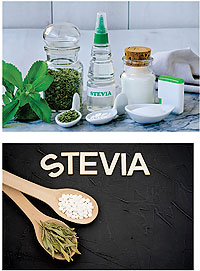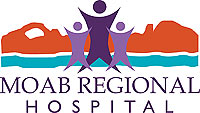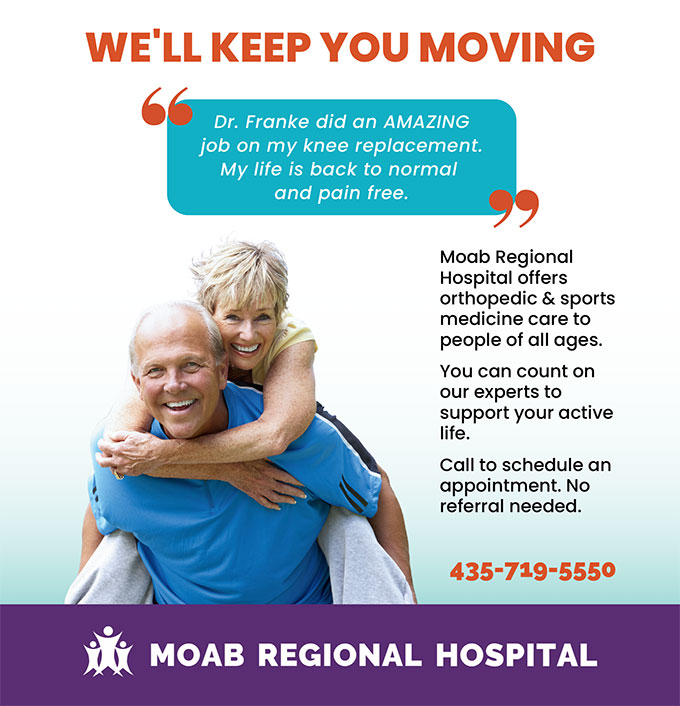|
|
| HEALTHY HAPPENINGS - October 2023 |
Can’t Live Without It?
by Ray Andrew, MD
|
 Mike had just been told he has less than a 10% risk of his cancer returning. He was diagnosed with cancer at age 47 and had a chunk of his colon removed. He then underwent chemotherapy. He ended up stopping after only three of the eight planned rounds because he couldn’t stop vomiting and couldn’t walk three feet without falling over. Mike had just been told he has less than a 10% risk of his cancer returning. He was diagnosed with cancer at age 47 and had a chunk of his colon removed. He then underwent chemotherapy. He ended up stopping after only three of the eight planned rounds because he couldn’t stop vomiting and couldn’t walk three feet without falling over.
Mike and Sarah returned to my office to review the results of tests we had recently performed. If Mike were a car, we might say that his engine purrs like a kitten. He feels great. Lifting up the hood, however, we discovered some problems that need attention if he wants to stick around a long time: high blood sugar, very high blood vessel inflammation (which triggers heart attacks and strokes), inappropriate clotting in his bloodstream (which can lead to sudden death), severe testosterone deficiency, toxic amounts of the heavy metals lead and cadmium, and a chronic virus. If all that wasn’t enough, Mike was found to have cancer cells floating around in his bloodstream, just looking for new places to settle and grow.
In other words, in addition to having all the makings of heart disease, stroke, diabetes, Alzheimer’s, obesity, and sudden death, he has a 100% chance of his colon cancer popping up in any number of places in his body within 10 years…unless he does something about it now. Analyzing his circulating tumor cells, we also discovered that they have specific receptors on them that enable them to grow exceptionally well in the presence of sugar.

Doctors have long known that sugar feeds cancer. That is, after all, how a PET scan finds tumors: a medical professional injects sugar into a vein and watches where it concentrates in the body. Some tumors are especially good at utilizing sugar to grow. So it goes without saying that, while every person with cancer must eliminate sugar if they want to reduce their risk of the tumor returning, this is even more true for Mike.
But what about the rest of us, who don’t have cancer? Can we afford to continue this indulgence?
One of my mother’s friends once commented about the horrible headaches she had every day. My mother suggested she come see me. When this woman learned it would be a while before she could get in to see me, my mother suggested she eliminate sugar from her diet. Voila! Headaches gone.
It turns out that, as delicious as sugar-laden foods are, the taste of sugar is its only redeeming quality. It is highly inflammatory, which is significant since Time Magazine in 2004 announced “The Secret Killer - The Surprising Link between Inflammation and Heart Attacks, Cancer, Alzheimer's, and Other Diseases.” Even something as simple as achy joints can stem from that seemingly innocent but irresistible temptation. Sugar intake has also been found to increase depression, which seems to be affecting someone in nearly every family in America right now.

If that’s not bad enough, a brand new study just published in 1973 demonstrated that white blood cells (a critical part of your immune system) are dramatically less able to engulf bacteria for a whopping five hours after eating a sugary food. Do you really want to trade five minutes of pleasure for five hours of impaired immune function?
As increasing numbers of Americans are wisening up to the dangers of sugar, the food industry has found all kinds of creative ways to disguise or make sugar appear more natural on labels: Dextrose, Fructose, Galactose, Glucose, Lactose, Maltose, Sucrose, Beet sugar, Brown sugar, Cane juice crystals, Cane sugar, Castor sugar, Coconut sugar, Confectioner's sugar (powdered sugar), Corn syrup solids, Crystalline fructose, Date sugar, Demerara sugar, Dextrin, Diastatic malt, Ethyl maltol, Florida crystals, Golden sugar, Glucose syrup solids, Grape sugar, Icing sugar, Maltodextrin, Muscovado sugar, Panela sugar, Raw sugar, Sucanat, Turbinado sugar, Yellow sugar, Agave Nectar/Syrup, Barley malt, Brown rice syrup, Buttered sugar/buttercream, Caramel, Carob syrup, Corn syrup, Evaporated cane juice, Fruit juice, Fruit juice concentrate, Golden syrup, High-Fructose Corn Syrup (HFCS), Invert sugar, Malt syrup, Rice syrup, Refiner's syrup, Sorghum syrup, and Treacle. If you see any of these names on a label, just be aware that what you are looking at is not something your great grandparents ate or drank.
Some people say we should never sacrifice what we want most for what we want now. I can’t argue with that. Personally, I would rather skip the diabetes in the long run than enjoy that mouth-watering bowl of ice cream now. Don’t get me wrong: I had more than my fair share of donuts, ice cream, and cookies for years before I really knew better. Once exposed to the truth, each of us has to decide what we value most.
 If you can’t bring yourself to eliminate added sugar from your life, you might consider taking the lead of Laura Elizabeth Ingalls Wilder of Little House on the Prairie fame. She and her sisters got “two pieces of Christmas candy” once a year. Whether you choose to indulge only once a year or even once a week, your body will benefit from the reduction. If you can’t bring yourself to eliminate added sugar from your life, you might consider taking the lead of Laura Elizabeth Ingalls Wilder of Little House on the Prairie fame. She and her sisters got “two pieces of Christmas candy” once a year. Whether you choose to indulge only once a year or even once a week, your body will benefit from the reduction.
Just make sure you don’t fall for the food industry’s sugar-free/diet gimmicks. The poisons in these products cause every bit as much disease as refined sugar itself, unless sweetened with the all-natural no-calorie agents stevia or monk fruit. You can make your own treats with honey or monk fruit. Just don’t go overboard on the honey or you’ll still spike your blood glucose levels.
The bottom line is that, unlike Mike, you don’t have to wait until you receive that diagnosis of cancer or some other disease before you choose to divorce yourself from your abuser. If you have reached the point where you truly want to kick the sugar habit, there are things you can do. If resolve is all it takes to kick the habit, great. But if you find yourself addicted, don’t beat yourself up. Long ago, studies of rats demonstrated that sugar is more addictive than heroin. But you can beat it. Identifying and treating the underlying cause of your addiction can be life-changing. Addiction isn’t a problem of willpower, and no drug is going to fix it. You may have undiagnosed intestinal permeability, yeast overgrowth, hormone or mineral imbalances, amino acid deficiencies, or another disturbance that is sabotaging your efforts. If you find you need help, call Prestige Wellness Institute at (435) 210-0184 to get started on your journey to better health and a better life.
And be sure to mention you read about this in Moab Happenings.
|
5 Remarkable Benefits of Strength Training for Seniors
|
As you grow older, have your muscles grown weaker? Are you unable to lift as much weight as you used to? Do you lack stamina? You're not alone. Starting at age 40, most people lose 3% to 5% of their muscle mass. By the age of 60, a condition known as sarcopenia sets in. Sarcopenia is the gradual loss of muscle strength and bulk. It can reduce one's ability to perform daily tasks.
 But all is not lost; you can regain muscle strength and form through exercise, particularly strength training or resistance exercise. A strong body helps to: But all is not lost; you can regain muscle strength and form through exercise, particularly strength training or resistance exercise. A strong body helps to:
• Reduce your risk of falling
• Maintain your independence
• Strengthen your immunity
• Improve your mental health
• Make you more energetic
• Improve your balance
Strength training builds muscle strength and mass which reduces the risk of osteoporosis. The Center for Physical Activity and Nutrition at Tufts University in Massachusetts conducted a study in 2003 which concluded that strength training two to three times a week could also reduce the symptoms of arthritis and type 2 diabetes. It could also improve sleep and combat depression.
According to the U.S. Department of Health and Human Services (DHHS), adults should strength train at least twice weekly. The exercises should aim at working all the major muscle groups, such as the chest, back, arms, abdominals, legs, and shoulders.
Start your strength training journey and enjoy the following advantages:
1. Reduce your risk of falls
Falls are an ever-present danger for seniors. World Health Organization (WHO) statistics indicate that falls significantly cause accidental injury and death, which deaths are highest among senior citizens.
Several factors can cause falls. These include poor vision, improper footwear, and medication-induced dizziness. Poor balance and weak muscles and bones can also lead to falls. Weight-lifting or resistance training exercises strengthen your muscles and bones and reduce your chances of falling.
2. Maintain your independence
As you grow older, natural mass loss could lead to the inability to perform daily tasks like cleaning up, carrying your groceries, or even walking. This reduces your independence and could lead to depression. To guard against this, start strength training.
3. Strengthen your immune system
Overall, exercise boosts the immune system. In particular, researchers have found that resistance exercise supports the immune system. It strengthens the body to resist infection and improves the effectiveness of vaccinations.
A review by Belgian researchers, published in the Journal of Experimental Gerontology in July 2022, concluded that strength training enhances the immune cell function of people of all ages.
Additionally, Brazilian researchers had earlier concluded that a single weight lifting and resistance training session boosts the body's white blood cell count afterward. These findings were published in the Journal of Immunology Research in June 2018.
4. Improve your mental health
Exercise, particularly weight training, has been associated with improved mental health. A 2019 meta-analysis of more than 20 published studies show that strength training helps in memory retention, reasoning, and attention. The results of the analysis were published in the Psychological Research journal.
Moreover, a study by the University of Sydney researchers concluded that weight training can protect the brain from Alzheimer's disease.
The study, published in the NeuroImage: Clinical journal in 2020, involved 100 participants whose memory had declined, although they could still perform everyday tasks.
Participants lifted weights for 45 minutes twice a week for six months. Senior study author Michael Valenzuela was quoted as saying that strength training improved the participants' brain function.
5. Reduce your risk of fractures
Strength training makes bones stronger and denser and less likely to fracture. When you subject your body to the strain of weightlifting, the body discards old bone tissue and promotes new tissue production. Resistance training also improves your balance and coordination, thus reducing the risk of falls and fractures.
A 2017 study by researchers affiliated with the School of Allied Health Sciences, Griffith University, Queensland, Australia, concluded that a high-intensity program was more effective in strengthening bones than a low-intensity one. The eight-month study involved 101 postmenopausal women whose bone mass ranged from low to very low.
Exercise as a whole is beneficial at many levels. However, some senior citizens may feel that lifting weights is beyond them. It's not. It's never too late to start strength training! Talk to your healthcare provider before starting any exercise plan.
If you'd like to start strength training but have some injuries preventing you, Dr. Kimberley Franke, a board-certified and fellowship-trained orthopedic surgeon at Moab Regional Hospital, may be able to help. Dr. Franke specializes in shoulder replacements, shoulder instability, rotator cuff repair, and fractures and also performs general orthopedic surgery, including knee reconstructions and hip replacements. Her love of outdoor recreational activities, such as mountain biking, canyoneering, and climbing, fuels her desire to help individuals overcome injuries in order to be able to continue participating in the activities they enjoy. Call 435-719-5500 and schedule your appointment today!

Free Community Lunch
Thursdays from 11:30am to 1:00pm at the St. Francis Episcopal Church (250 Kane Creek Boulevard, Moab). Free lunches for all who come by. Homemade soups (always several choices) or sandwiches, bread (chips with sandwiches), dessert, coffee and water. Call St. Francis Episcopal Church at 435 259-5831 for information.
Free Community Food Pantry
Fridays from 4-6pm at the St. Francis Episcopal Church (250 Kane Creek Boulevard, Moab) No ID, no name, no address, no personal information needed. We always have canned goods, bagged goods, meat. We often have bread, fresh produce, milk, cheese, fruit juice, eggs. Also personal toiletries, cleaning supplies, diapers, dog food. Feel free to pick up for someone who can't get out, or someone who is working. Call St. Francis Episcopal Church at 435 259-5831 for information.
Moab Valley Multicultural Center Food Pantry
Clients may access the Food Pantry once every two weeks. Schedule:
Mon Wed Thu: 9am-12pm, 1-5pm
Tue: 9am-12pm, 2:30-5pm
Fri: 9am-12pm
LUNCH at the Grand Center,
182 N. 500 W. Noon on Mon, Tues, Wed & Fri under 60: $6.00 over 60: $2.50 suggested donation
Moab Community Health Talks - Our Village Community Center hosts Dr. Don Leathers, naturopathic physician, and Sarah Cook, massage therapist health coach & lay homeopath in an informal round table discussion meant for community members to have their questions answered in a supportive space. Second Wednesday of each month. 1-2pm at Our Village Community Center, 721 N 500 W, Moab. Suggested donation of $5-$20. Info: ourvillage.org, phoenixrisingmoab.com, sarahcookmassage.com or 435-260-0294 or 435-259-8123
Moab Community Yoga
Tuesdays 6:30-7:30pm at the Moab Arts and Recreation Center (MARC) in the dance room. 111 E 100 N
Gyrokinesis® Class w/ Anne Howe
The Gyrokinesis® Method is a movement method that addresses the entire body, opening energy pathways, stimulating the nervous system, increasing range of motion and creating functional strength through rhythmic, flowing movement sequences. It is an original and unique method that coordinates movement, breath and mental focus. Thursdays 5:30-6:30pm. Sundari Yoga & Wellness Studio 1105 S US-191 #3 www.sundariyogamoab.com
Sheng Zhen Meditation - Thursdays 5:30-7pm at Moab Arts and Recreation Center. Other classes available and info at shengzhenmoab.com/
Community Reiki (Alternating Tuesdays, 9am & 3pm)
Join Crystal at Mindful Movement Moab, 76 S Main St Suite 15, for a free 30 minute community Reiki Session. Must be a local resident for the session. Sign up online at www.mindfulmovementmoab.com
Yoga in the Park (Wednesdays, Swanny Park, 5pm)
Join Breann with Wellness Collective for a 60 minute yoga session brought to the community by a partnership with USARA. Mats are provided and the class is open to everyone in the community. Yoga is free. At Swanny Park. Sign up for class online at www.wellnesscollectivemoab.com
Yoga in the Park (Thursdays, Swanny Park, 8am)
Join Crystal with Wellness Collective for a 45 minute yoga session brought to the community by a partnership with USARA. Mats are provided and the class is open to everyone in the community. Yoga is free and you can sign up for class online at www.wellnesscollectivemoab.com
Virtual Mindfulness Class (Thursdays, 6pm)
Join the facilitators with Wellness Collective for a 30 minute mindfulness session brought to the community by a partnership with USARA. Class is free and you can sign up online to receive the zoom link.
www.wellnesscollectivemoab.com
Virtual Trauma Sensitive Yoga (Mondays, 6pm) Trauma Sensitive Yoga focuses on the use of yoga movements as an opportunity to practice making choices with our bodies and to possibly notice what we feel in our bodies. Class is free and you can sign up online to receive the zoom link. www.wellnesscollectivemoab.com
|
|
|
|
|
|
|
|
|
© 2002-2024 Moab Happenings. All rights
reserved.
Reproduction of information contained in this site is
expressly prohibited.
|
|